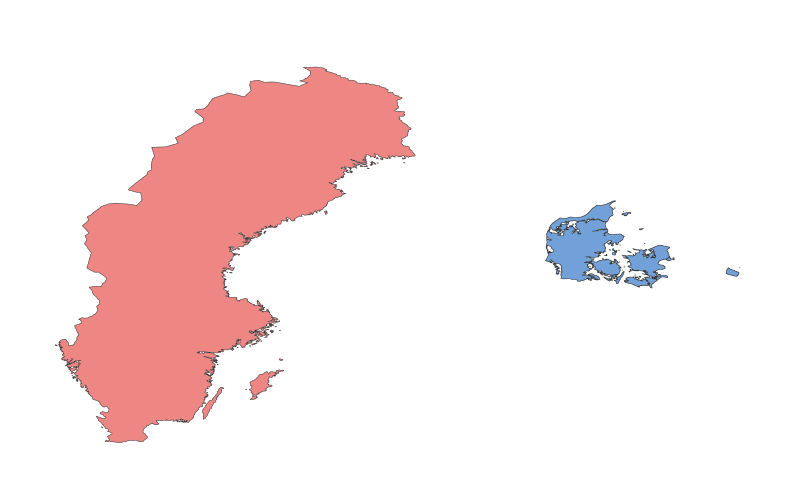Suecia vs. Dinamarca: Comparación Geográfica

Suecia vs. Dinamarca: Comparación Geográfica
Tabla Comparativa
| Categoría | Suecia | Dinamarca |
|---|---|---|
| Ubicación | Norte de Europa, Península Escandinava | Norte de Europa, entre el Mar Báltico y el Mar del Norte |
| Tamaño | 450,295 km² | 42,933 km² |
| Clima | Templado a subártico, inviernos fríos | Templado marítimo, inviernos suaves |
| Recursos Naturales | Bosques, minerales (hierro), energía hidroeléctrica | Agricultura, gas natural, energía eólica |
| Desarrollo Urbano | Ciudades dispersas, Estocolmo como capital | Ciudades compactas, Copenhague como capital |
| Transporte | Red extensa de ferrocarriles y carreteras | Infraestructura ciclista avanzada, puentes internacionales |
Descripción de los Países
Suecia
Historia y Cultura:
Suecia tiene una rica historia vikinga y fue una gran potencia en el norte de Europa durante los siglos XVII y XVIII. Hoy es conocida por su modelo de bienestar social, neutralidad política y contribuciones culturales como el Premio Nobel. La cultura sueca valora la igualdad, la sostenibilidad y la vida al aire libre.
Economía:
Suecia tiene una economía diversificada, con sectores fuertes en tecnología (Ericsson, Spotify), manufactura (Volvo, IKEA) y energía renovable. Es uno de los países más innovadores del mundo.
Dinamarca
Historia y Cultura:
Dinamarca, cuna de los vikingos, fue un reino influyente en la Edad Media. Hoy es famosa por su calidad de vida, diseño danés y estilo de vida "hygge". La sociedad danesa prioriza la felicidad, la educación y la sostenibilidad.
Economía:
Dinamarca tiene una economía fuerte basada en la agricultura (exportaciones de carne y lácteos), energía eólica (Ørsted) y productos farmacéuticos (Novo Nordisk). Es líder en transición verde y bienestar social.
Conclusión:
Aunque comparten raíces históricas y culturales, Suecia y Dinamarca difieren en geografía, clima y enfoque económico. Suecia destaca por su vasta naturaleza e industria tecnológica, mientras que Dinamarca brilla en diseño urbano y sostenibilidad.